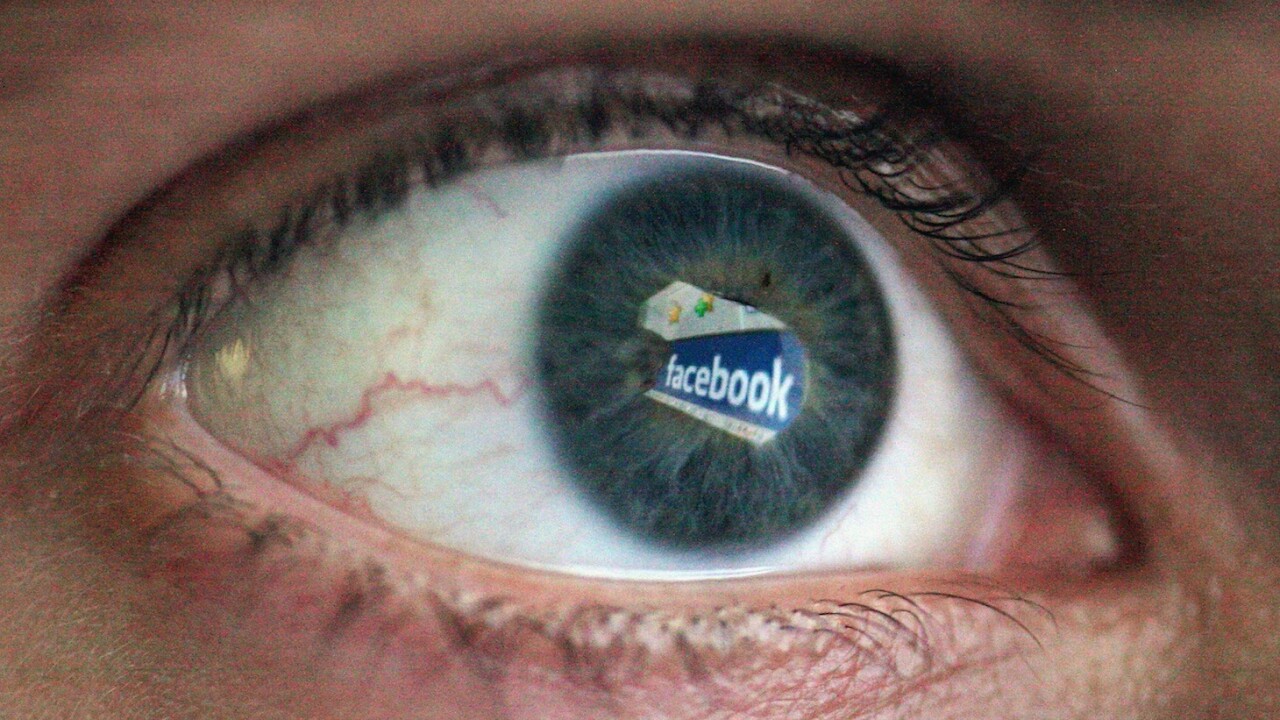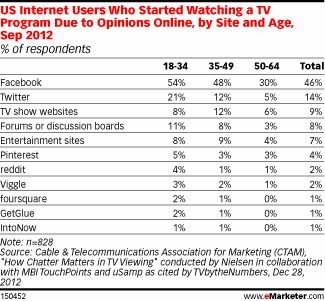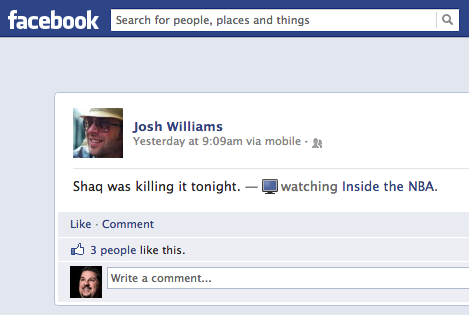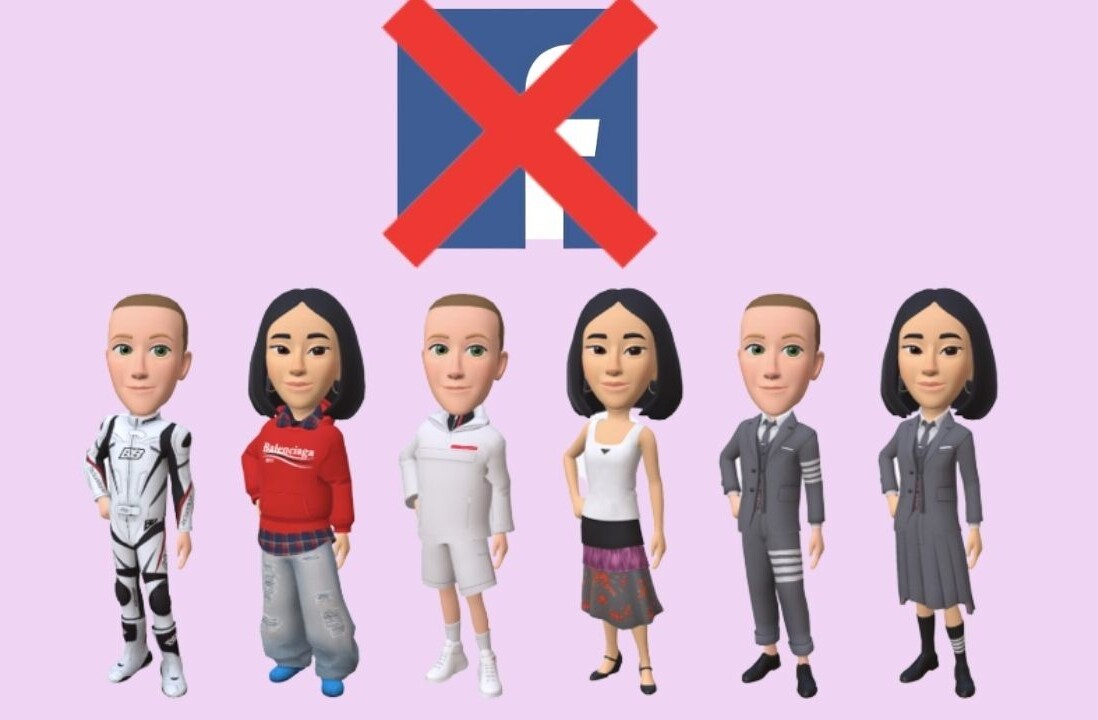
Despite, and in fact perhaps even thanks to the unstoppable rise of social media, we still watch a ton of television (by which I mean content).
Another fact: the way we look at TV has forever changed, in no small part because of social networking services like Twitter and Facebook, and social television apps like GetGlue, Yahoo-acquired IntoNow, Dijit-acquired Miso, Comcast’s Tunerfish and Zeebox, among others.
We watch television with one or more mobile devices in our hands or within reach, and we happily share with others online what we like and don’t like when we’re watching TV. It is decidedly no longer an ‘offline experience’ for a whole lot of people, and that group is getting bigger.
Social TV is anything but new, but it’s definitely maturing alongside social media companies – and content providers – ever since the MIT Technology Review dubbed it a breakthrough technology back in 2010.
Social TV – an industry in full swing
The symbiosis between traditional TV and social media is what led Twitter to remark that its recent acquisition of social television analytics company Bluefin Labs would “help us create innovative new ad products and consumer experiences in the exciting intersection of Twitter and TV.”
An exciting intersection it is indeed – and a busy one, too.
Last year, media measurement and analysis giant Nielsen acquired SocialGuide, a New York startup that also tracks Twitter and Facebook conversations about TV, and the company also partnered with Twitter to create a social ranking of US TV program popularity.
Meanwhile, Viggle almost merged with GetGlue in a $70 million deal, and TVGuide is reportedly on the selling block as well, with the likes of Yahoo evaluating the opportunity.
In 2012, a faculty at the Wharton School of Business even launched a ‘Social TV Lab’ to study the link between what is said on television and what is shared simultaneously on social media about shows – and ads.
It’s a bit of a given, but expect more movement in the social TV space throughout 2013, and also expect social networking juggernaut Facebook to play a central role, with its army of 1 billion+ users.
The Facebook Connection
Facebook hasn’t exactly been sitting and waiting on the sidelines as social television apps offering ‘second-screen experiences’ mature.
It’s been pitching personalized TV program guides based on what a user’s friends are watching to broadcasters for years, and offers developers of video apps an Open Graph action called ‘watch’ that helps users share which video-based content they’re watching through their Facebook apps.
Meanwhile, Facebook is set to unveil a new video-ad product in the first half of this year to try and bring in more ad dollars from TV advertisers, according to a recent AdAge report.
Based on the results of a September 2012 survey of US internet users conducted by Nielsen for the Cable & Telecommunications Association for Marketing, Facebook was found to have the greatest influence on getting people to watch a show, out of all online channels.
A whopping 46 percent said they picked up a show as a result of Facebook, followed by Twitter (14 percent), websites of TV shows (9 percent) and forums or discussion boards (8 percent).
In a very interesting April 2012 interview with Lost Remote, Facebook’s head of entertainment and media marketing solutions, Kay Madati, had some fascinating things to say about the company’s social TV strategy:
The framework for implementation – the before, during and after – probably simplistic but purposely so.
When we talk about social TV, Facebook is looking at all of these things. Lots of activity is happening during, that’s when people are building co-viewing applications. We’ve done some great things, Twitter’s done some great things, GetGlue’s done some great things.
What I whole-on believe – too many people are missing the opportunity for the before and after.
…
Content producers will start but then move away because of other priorities. Meanwhile that conversation in the social sphere continues, there’s an opportunity to keep people engaged.
When you look at opportunities in all three quadrants, at scale, Facebook presents an unprecedented opportunity. To grow awareness and ultimately ratings and tune-in for a show.
Facebook next to promote ‘TV check-in’ feature?
I think the new status update sharing box that it’s currently testing with a small set of users may also have a profound impact on this space, and it will inevitably have an effect on the likes of GetGlue and Dijit/Miso.
As first reported by TechCrunch almost two weeks ago, Facebook is currently experimenting with ways to let users share updates more visually, using emoticons and whatnot. That’s interesting in itself, but I think the ‘watching’ update option is particularly noteworthy.
What is it, if not a TV check-in feature? For example, look at this message that was shared yesterday by Facebook product manager (and previously co-founder and CEO of Facebook-acquired Gowalla) Josh Williams:
Williams’ role at Facebook, according to his LinkedIn profile, is “imagining new ways to see the world through the eyes of our friends.”
Sharing which media is being consumed is one of those ways, and it would conveniently tie in perfectly with Facebook’s Social Graph and Graph Search. Making it visually appealing, and thus having such a status stand out in a friend’s newsfeed, only adds to the potential power of a proper Facebook TV check-in feature.
And, of course, by mining what which people are watching when, and with whom, Facebook will be able to build up a treasure trove of social TV data that could greatly benefit its advertisers and partners.
What’s on next?
Social television apps have already come a long way, but we’ll likely see more consolidation in the industry down the road. I wouldn’t be surprised to see Facebook playing a leading role here – perhaps they should go have a chat with GetGlue now that the Viggle deal is off.
Whatever happens next, it will continue to be an interesting space to watch (pun intended), particularly with the ongoing rise of second-screen apps, broadcasters getting their act together, and Twitter’s shifting focus to media consumption and analytics.
The other elephant in the room that wasn’t mentioned in this post, but can’t be ignored, is Google.
How could they be ignored, with platforms like Android and Google TV, as well as services like YouTube and Google+ in their arsenal?
We’ll leave that for another post, though.
If you’re interested in the social TV space, you should also read:
Will the personalised Web destroy discovery?
GetGlue gives its iPhone app more TV show content and promoted posts, plans remote control features
Viggle celebrates its first year with 1.8 million registered users and 151 million check-ins
Social TV app yap.TV wants to help broadcasters reach your second screen
Second screen content, coming soon to your movie theaters
In the future of television, the set-top box is king (Quartz)
Why the Facebook Status May Beat the Tweet for Social TV Measurement (Forbes)
Image credit: Dan Kitwood / Getty Images
Get the TNW newsletter
Get the most important tech news in your inbox each week.







